Diagramming Compound Sentences
A compound sentence has two or more independent clauses and no dependent (subordinate) clauses. To diagram the simple subjects and simple predicates of a compound sentence, we follow these steps:
- Diagram each simple sentence, one below the other.
- Join the two sentences with a dotted line on the left side.
- Write the coordinating conjunction on the dotted line.
Below, we diagram the simple subjects and simple predicates of these compound sentences:
- Fido is eating, so Spot is growling.
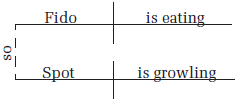
- Leroy is sanding, and Julia is painting.
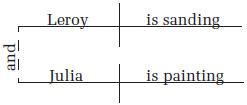
- Allison enjoys surfing, for she is athletic.
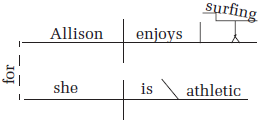
Examples 1
Diagram the simple subjects and simple predicates of these compound sentences:
- The mouse looked at Grandma, and she screamed.
- The steam engine provided energy for the new machines, and the railroads were powered by its energy as well.
Solutions
We diagram the simple subject and simple predicate of each simple sentence and place them one below the other. Then we join them with a dotted line on which we write the coordinating conjunction "and."
|
1. |
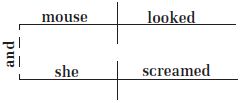 |
|
2. |
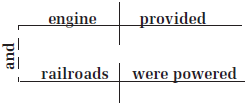 |
Examples 2
Practice diagramming compound sentences:
- Elinor Wylie wrote a poem about velvet shoes, but Joyce Kilmer wrote a poem about trees.
- James McHenry remained a Federalist, but many of his associates became Democratic-Republicans.
Solutions
We diagram the simple subject and simple predicate of each simple sentence and place them one below the other. Then we join them with a dotted line on which we write the coordinating conjunction "but."
|
1. |
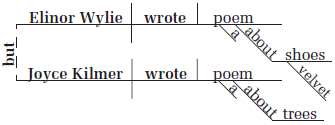 |
|
2. |
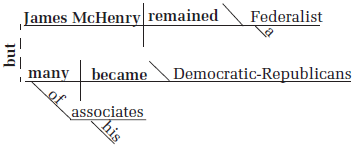 |
Examples 3
Choose the correct word to complete each sentence.
- A compound sentence has (one, two, three) or more independent clauses and no dependent clauses.
- A simple sentence is one (dependent, independent) clause.
- When diagramming compound sentences, we join the simple sentences with a (solid, dotted, wavy) line on the (right, left) side.
- We write the coordinating (subject, predicate, conjunction) on the dotted line.
Solutions
- A compound sentence has two or more independent clauses and no dependent clauses.
- A simple sentence is one independent clause.
- When diagramming compound sentences, we join the simple sentences with a dotted line on the left side.
- We write the coordinating conjunction on the dotted line.